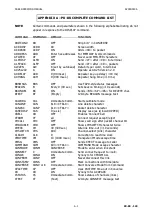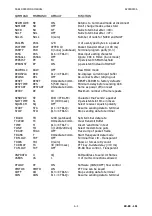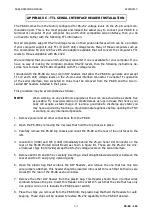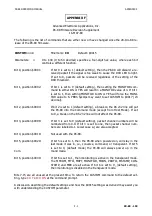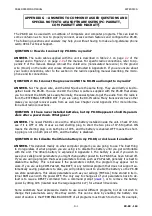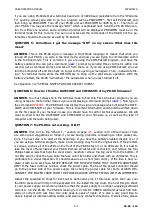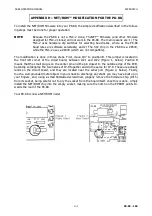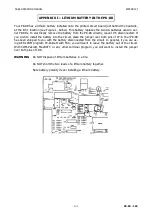
PK-88 OPERATING MANUAL
APPENDIX F
F - 4
PK-88 - 162
The PK-88 generates Morse code by switching from the mark tone to the space tone. This pre-
vents other TNC's from accidentally transmitting and colliding with a CW ID.
WHYNOT
ON|OFF
Mnemonic:
WHY
Default: OFF
Parameters:
ON
PK-88 will generate a reason why a received packet was not displayed to the
screen.
OFF
This function is disabled.
During packet operation, the PK-88 may receive many packets that are not displayed to the
screen. Turning WHYNOT on will cause the PK-88 to display a message explaining the reason the
received packet was not displayed to the screen.
The messages and their meanings are shown on the following page.
Bit residue:
The frame ended in the middle of a byte. A weak packet signal might cause
this, or, more likely, random noise that triggered the start of packet recep-
tion. Also, this may occur after a genuine frame has been received.
BUFFER OVERFLOW: An incoming packet overflowed an internal buffer. Probably caused by a non-
AX.25 packet.
FRAME TOO LONG:
More than 300 bytes were received in a packet frame. Probably caused by a
non-AX.25 packet.
PASSALL:
The received packet frame had errors and PASSALL was off, thereby prevent
ing the packet from being displayed to the screen.
DCD Threshold:
The Threshold control was set to far counter clockwise. The DCD LED was
off when the packet was received.
MONITOR:
The MONITOR value was set to low to receive this type of frame.
MCON:
MCON was set too low to receive-this type of frame.
MPROTO:
MPROTO was set to off, and the received packet was probably a NET/ROM or
TCP/IP frame.
MFROM/MTO:
The frame was blocked by the setting of either the MFROM or MTO com-
mand.
MBX:
The call sign of the sending station does not match the call sign setting in
the MBX command.
MBX Sequence:
The packet frame has been received out of sequence, probably a retry.
RX Overrun:
Another HDLC byte was received before we could read the previous one out
of the HDLC chip.
The MPROTO command default is set to OFF.


